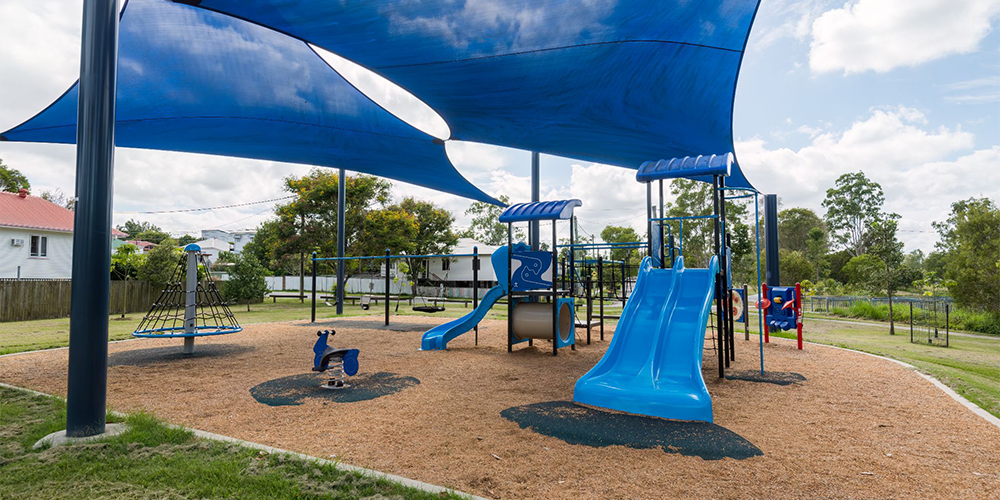Luskin researcher and partners publish Nature commentary defining shade deserts and ways to eliminate them
Shade is an essential solution to reduce health disparities exacerbated by extreme heat
Shaded playgrounds protect children from heat-related illness. Credit: ARK Photography
By Mara Elana Burstein
Cities across the world don’t have enough shade to protect all residents, particularly the most marginalized, from the health impacts of extreme heat. Published in Nature Commentary, UCLA Luskin Center for Innovation associate director V. Kelly Turner and Arizona State University’s Ariane Middel and Jennifer K. Vanos define this deficiency as shade deserts.
The researchers explain that shade deserts are most experienced by those in low-income communities, exacerbating heat-health disparities. Limiting sun exposure by providing shelter with trees and buildings is one of the most efficient and cost-effective ways to reduce heat-related health risks outdoors. Even though shade is simple to create, it’s often underemphasized in urban planning and climate-change mitigation strategies.
“Academics and governments must adopt better methods to measure the human heat experience, assess current shade distribution, and plan effective interventions,” said V. Kelly Turner, associate director of the UCLA Luskin Center for Innovation.
The researchers advise municipal decision makers to:
- Recognize the many benefits of shade;
- Measure people’s heat experience (rather than a sole focus on land surface temperature and heat islands);
- Work with scholars to audit and plan shade infrastructure;
- Tailor specific and enforceable shade development to the context, including climate patterns, cost, and what, where, when, and how much shade is needed; as well as
- Build shade into government requirements for land-use planning, housing, education, transportation, and employment.
To reach heat equity, shade plans should pay attention to decisions that perpetuate inequities in shade access and heat exposures, and work to reverse them.
See coverage on Turner’s research in the Los Angeles Times, KCRW, CNN, and on NBC4.
To learn more about our work on extreme heat, visit our climate adaptation and resilience webpage.








